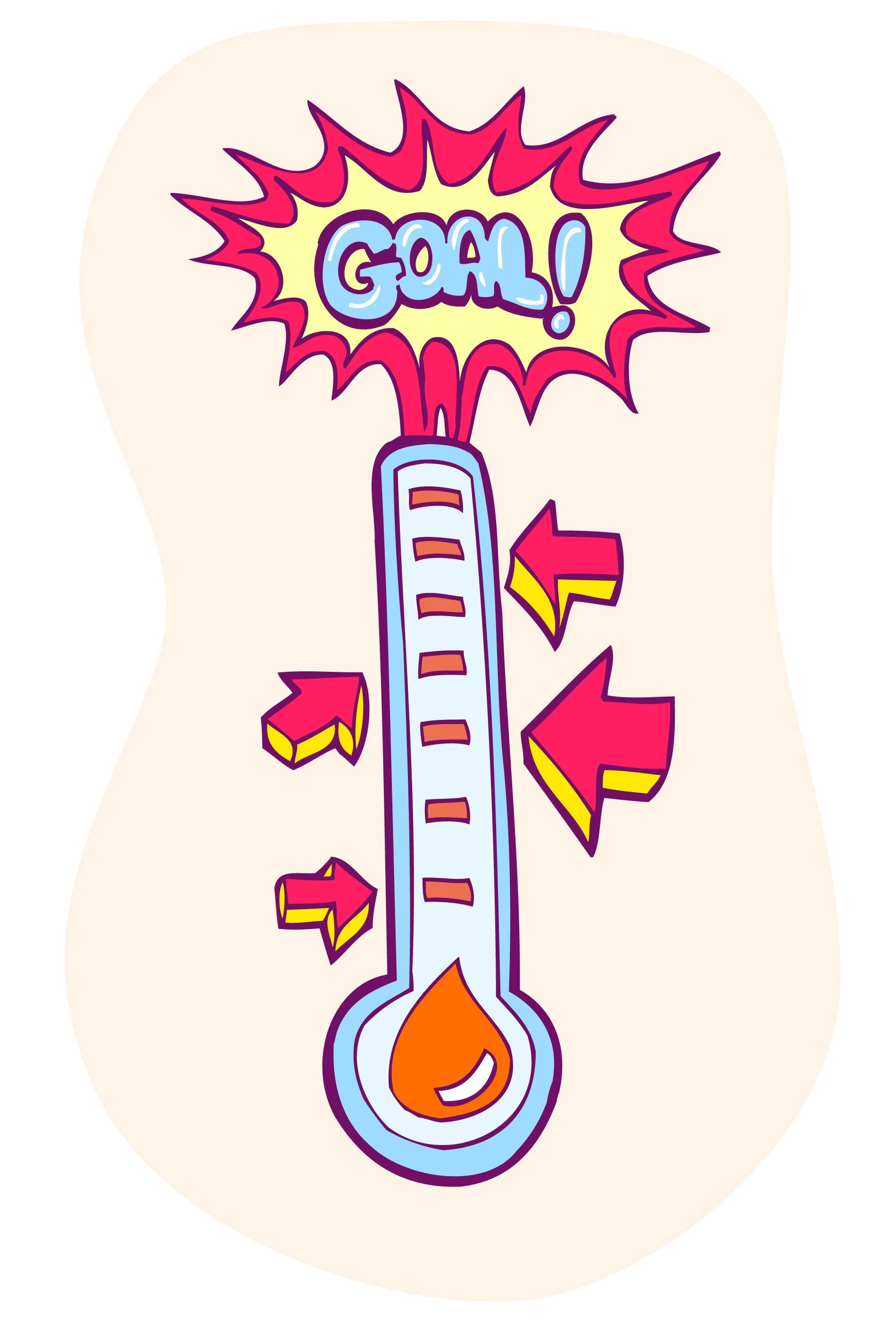Beyond Word Count: Five metrics to spice up your writing goals.
It’s still the goal setting time of year.
I’ve already talked about the need to set goals flexibly, while also giving yourself some accountability in your writing life.
But what exactly should you be tracking?
When we talk about writing goals, many of us think solely in terms of word count—and tracking words is great, but it’s not a good fit for every stage of the writing process.
In this post, I’m going to go over five metrics you can track that have nothing to do with word count and the pros & cons for each.
Let’s dive in!
Option #1: Time
Tracking time works for any stage of the writing process.
You can track this metric by setting a stop watch, noting your starting and stopping times, or by counting pomodoros (if you’re a fan of the pomodoro method—see more below).
Tracking time works well if you are diligent about tracking your time. If you’re prone to forgetfulness (i.e. you forget to start the timer or neglect to note when you started or finished writing, etc.) this might not be the best metric for you to track. Honestly, that’s why I don’t track time myself. I have about a 10% success rate in keeping track of time…and that’s a really generous estimate.
I have had a teeny-tiny amount of success tracking pomodoros. If you’re not familiar, the pomodoro method is a system of working in focused, 25 minute chunks alternated with 5 minute breaks. I love the pomodoro method for getting things done and there are several apps out there that you can use (I recommend this one).
I’m not the best at tracking pomodoros overall, but I do recommend using a pomodoro timer when you need to get a lot done in a short period of time or have many deep-work tasks to get through in a contained period.
Pros:
- can be used at any stage of the writing process
- doesn’t reward you for padding your writing with fluff
- can be used to motivate yourself or to focus on making more time for your writing
Cons:
- can be difficult to track unless you’re diligent about stopping/starting a timer
- not directly related to your writing goals (as in you can wrack up time at the keyboard without actually moving toward your writing goals)
- difficult to set a goal based on your writing project unless you have a strong sense of how fast you work
Option #2: Pages
Tracking pages works well when you are revising. I especially recommend using this method to track line-level revisions, copy editing or proofreading.
I don’t recommend tracking pages when drafting because focusing on filling up the space may lead you to pad out your writing with unnecessary fluff. When you are revising, I recommend you focus on how many draft pages you work through—whether or not your writing ends up shorter than when you started.
Pros:
- ideal for tracking line/ sentence level revisions
- easy to divide up/ allocate based on a deadline (e.g. a ten page per day goal to get through one hundred pages in ten days)
Cons:
- if used for writing, could lead to padding out pages with fluff
- operates independent of project quality—i.e. you can fill pages without writing anything of value
Set the “write” goals and rock your writing at each stage of the process!
Option #3: Scenes
This is my go-to metric for tracking revisions—especially when going from the first to second draft of a project.
I write in scenes (and I highly recommend thinking of your story this way—but that’s a lesson for another day), so revising in scenes makes sense to me.
Focusing on scenes written or scenes revised is a great way to detach yourself from the drive to simply write more. If you are the kind of person who starts writing crap just to meet a word count goal, writing in scenes might be a great way to detach yourself from the need to produce, produce, produce.
For this to work, you’ll likely need to have an outline or a draft that is already split into scenes. You could of course simply go into each writing session with the intent to write the “next” scene, but you’ll have to account for brainstorming time when you set goals for the number of scenes you’ll write per day.
I’ve also found that this method words best when you have long chunks of time to work with spread out throughout the week rather than a larger number of short writing sessions.
Why?
Each writing session needs to be long enough to work through an entire scene unless you’re willing to count half-scenes, but that can get complicated. If you count partial scenes, you’ll need to be comfortable with the idea that your final count might not add up to the exact number of scenes in your outline/ draft.
Pros:
- ideal for large-scale rewrites (as in the developmental editing stage of your project)
- can be a great way to break the habit of sacrificing quality in order to increase your word count
- the strength of each individual scene is integral to the overall strength of your story—focusing on scenes as your metric can help you ensure that each scene is pulling its weight in the story
Cons:
- can get tricky to count if you don’t have time to write a whole number of scenes during each writing session
- working to write/revise a certain number of scenes could lead you to hold on to scenes that aren’t serving your book rather than letting these scenes go
Option #4: Chapters
Counting chapters follows the same basic process as writing in scenes—the only difference is the amount of text that you’re dealing with.
If you write in chapters instead of scenes, this is a great option. If you only have a few, long writing sessions to work with, working through a couple of chapters at a time could be a great way to make the most of these writing sessions.
Working through chapters is a great way to track each stage of the revision process—line editing, copywriting, proofreading—chapters are a solid metric for each.
Pros:
- ideal for large chunks of writing time or for making progress quickly when you are working through the final stages of the revision process
- can be a great way to assess the strength of chapters and ensure that each chapter hooks readers into the next
Cons:
- same as scenes, can get tricky to count if you are working through partial chapters in a given writing session
Option #5: Pages Read
Surprised to see a reading goal on this list?
Don’t be!
Reading is an essential part of your growth & development as a writer. You can read for several reasons—to do research for your work in progress, to learn more about the craft of writing, or to understand the expectations for your chosen genre. Whatever you want to learn or do, setting a reading goal can get you closer to who you want to be as a writer.
I recommend setting a goal to read a certain number of pages or chapters per day.
I usually have a reading goal going alongside each of my writing goals, but you can also switch to a reading goal if you’re taking a break between drafting and revising or when you’re waiting for feedback from an editor or beta reader.
Pros:
- flexible, can be be used alongside or in place of your writing goals
- can be used to address a number of needs—research, craft development, or understanding genre conventions
Cons:
- adding reading goals on top of writing goals can feel overwhelming—don’t feel obligated to work on these goals simultaneously if you have limited time to focus on your writing
- reading the wrong books can lead you astray—e.g. getting stuck at the research stage might prevent you from making progress on your draft or lead you to info-dump information that isn’t essential to your book—be careful that your reading goals are serving your writing
- putting a number on your reading goal could take the fun out of it (especially if you’re working on understanding genre conventions) don’t let that happen to you—if setting a reading goal bogs you down, stop and go back to just reading for fun!

